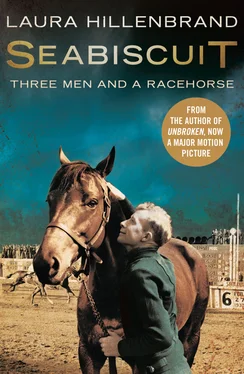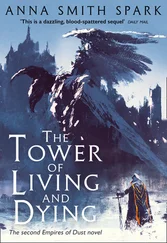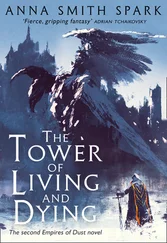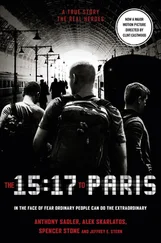To pilot a racehorse is to ride a half-ton catapult. It is without question one of the most formidable feats in sport. The extraordinary athleticism of the jockey is unparalleled: A study of the elements of athleticism conducted by Los Angeles exercise physiologists and physicians found that of all major sports competitors, jockeys may be, pound for pound, the best overall athletes. They have to be. To begin with, there are the demands on balance, coordination, and reflex. A horse’s body is a constantly shifting topography, with a bobbing head and neck and roiling muscle over the shoulders, back, and rump. On a running horse, a jockey does not sit in the saddle, he crouches over it, leaning all of his weight on his toes, which rest on the thin metal bases of stirrups dangling about a foot from the horse’s topline. When a horse is in full stride, the only parts of the jockey that are in continuous contact with the animal are the insides of the feet and ankles—everything else is balanced in midair. In other words, jockeys squat on the pitching backs of their mounts, a task much like perching on the grille of a car while it speeds down a twisting, potholed freeway in traffic. The stance is, in the words of University of North Carolina researchers, “ a situation of dynamic imbalanceand ballistic opportunity.” The center of balance is so narrow that if jockeys shift only slightly rearward, they will flip right off the back. If they tip more than a few inches forward, a fall is almost inevitable. A Thoroughbred’s neck, while broad from top to bottom, is surprisingly narrow in width, like the body of a fish. Pitching up and down as the horse runs, it offers little for the jockey to grab to avoid plunging to the ground and under the horse’s hooves.
Race riding is exceptionally exhausting. It is common for aspiring jockeys to be so rubber-legged upon dismounting from their first circuit around the track that they are unable to walk back to the barn. Strength is not just a tool for winning, it is necessary for survival. Jockey Johnny Longden was once rammed in midrace, knocked from his stirrups and sent flying downward in front of a pack of horses. He was saved by a jockey riding alongside him, George Taniguchi, who was so powerful that he was able to catch Longden with one hand. Taniguchi didn’t know his own strength, and in attempting to push Longden back into the saddle he instead hurled him right over the back of his horse. Longden found himself in the same predicament on the other side of his mount until jockey Rogelio Trejos, whose horse was about to run Longden down, lunged forward, snagged the jockey with the ease of an outfielder and righted him in the saddle, also with one hand. Incredibly, Longden won the race. The Daily Racing Form called it “ the ultimate impossibility.”
A jockey is no mere passenger on a racehorse. His role in bringing home winners is critical and demanding. First, jockeys must have an exquisitely fine sense of pace over each furlong, or eighth of a mile. Strategy is crucial. Front-runners have the best chance of winning if they set moderate or slow fractional times, leaving themselves the energy to fend off closers, while closers have the best chance of winning if they lag behind a brisk pace, then swoop around the exhausted front-runners in the homestretch. The difference between a fast fraction and a slow fraction is often less than a second, and a jockey must be able to discriminate between the two to place his horse optimally. Great jockeys have a freakish talent for gauging pace to within two or three fifths of a second of the actual time and, if asked, can reliably gallop a horse over a distance at precisely the clip requested.
Positioning relative to the field is also critical. A racehorse is an enormous creature who needs a wide berth, and as he weighs half a ton and carries one hundred-plus pounds on his back, he cannot afford to have his momentum stopped or acceleration wasted. Running wide around turns offers the best chance of clear sailing but exacts a high price in extra distance the horse has to cover. In a big field, jockeys who opt to go wide may have to swing as many as ten “paths” out, forcing their horses to run roughly ten lengths farther than horses on the rail. The best riders take the inside route whenever possible, but this is risky. Because everyone wants to be there, horses usually bunch up by the rail, so closely that hips and shoulders rub and stirrups clink off each other, making maneuvering difficult or impossible. Tiring pacesetters generally slow down right in front of the rail-running pack, compounding the traffic jams.
To judge whether or not he’s likely to get pocketed if he steers his horse to the rail, a jockey must be able to read the subtleties in the stances of horses and riders in front—the tautness in the reins, the height of the jockey over the saddle, the crispness and cadence of the stride—to gauge how much gas is left in the tank. Doing homework is imperative; some runners habitually drift in or out in the homestretch or on turns, and the jockey who can arm himself with this knowledge and position himself on the rail behind such a horse can ensure himself a clear path of escape. He must also have the instinct to judge whether or not a hole opening in front of him will stay open long enough to get through, if the space is wide enough, and if his horse has the acceleration to get to it before it slams shut. If he judges it correctly, he can save ground and win a race. If he misjudges it, he may end up fouling other horses and being disqualified, checking his horse sharply and sacrificing his momentum or even falling.
Requiring that its human competitors straddle erratic animals moving in dense groups at extremely high speed, race riding in the 1930s, as today, was fraught with extreme danger. Riders didn’t even have to leave the saddle to be badly hurt. Their hands and shins were smashed and their knee ligaments ripped when horses twisted beneath them or banged into rails and walls. Their ankles were crushed when their feet became caught in the starter’s webbing. With the advent of the first primitive, unpadded starting gates in the early thirties, some riders actually died in the saddle, speared into the exposed steel overhead bars by rearing horses. Riders suffered horrible injuries when dragged from their stirrups and under their horses’ legs or when thrown forward, ending up clinging to the underside of the horses’ necks while the animals’ front legs pummeled their chests and abdomens.
The only thing more dangerous than being on the back of a racehorse was being thrown from one. Some jockeys took two hundred or more fallsin their careers. Some were shot into the air when horses would “prop,” or plant their front hooves and slow abruptly. Others went down when their mounts would bolt, crashing into the rail or even the grandstand. A common accident was “clipping heels,” in which trailing horses tripped over leading horses’ hind hooves, usually sending the trailing horse and rider into a somersault. Finally, horses could break down, racing’s euphemism for incurring leg injuries. This could happen without warning, sending the victim pitching headfirst into the ground. A rider who lost touch with the saddle became a projectile moving at sixty feet per second, and whatever he hit became a potentially lethal instrument. If he was lucky enough to survive the impact with the ground and possibly his horse’s falling body, he often had trailing horses, their hooves striking the ground with as much as three thousand pounds of force, bearing down on him. In the worst cases, a single faller could trigger a chain-reaction pileup onto a downed jockey.
Serious insults to the body, the kind of shattering or crushing injury seen in high-speed auto wrecks, are an absolute certainty for every single jockey. Today the Jockeys’ Guild, which covers riders in the United States, receives an average of twenty-five hundred injury notifications per year, with two deaths and two and a half cases of paralysis. The Guild is currently supporting fifty riders who were permanently disabled on the job. According to a study by the Rehabilitation Institute of Chicago, each year the average jockey is injured three times and spends a total of almost eight weeks sidelined by injuries incurred on the track. Nearly one in every five injuries is to the head or neck. A 1993 survey found that 13 percent of jockeys suffered concussionsover a period of just four months. Injury rates were, by all accounts, far higher in the 1920s and 1930s; between 1935 and 1939 alone, nineteen riders were killed in racing accidents. The hell-for-leather riding tactics practiced in the era, and the absence of protective gear, increased the vulnerability of race riders to mortal injury. Today races are filmed from multiple angles to ensure safe riding. Jockeys wear flak jackets, goggles, and high-tech helmets and compete at tracks equipped with safety rails and ambulances that trail the field around the track. No such luxuries were available to the jockeys of the twenties and thirties. At best, only one or two stewards monitored riding tactics. A jockey’s only bodily protection was a skullcap constructed of silk-covered cardboard. Former jockey Morris Griffin, who was paralyzed in a 1946 racing fall, likened his headgear to a yarmulke. Lacking a chin strap, it usually popped off before the wearer slammed into the ground. Cutting out the lining and crown to lower their riding weight, most jockeys rendered the skullcap useless.
Читать дальше











